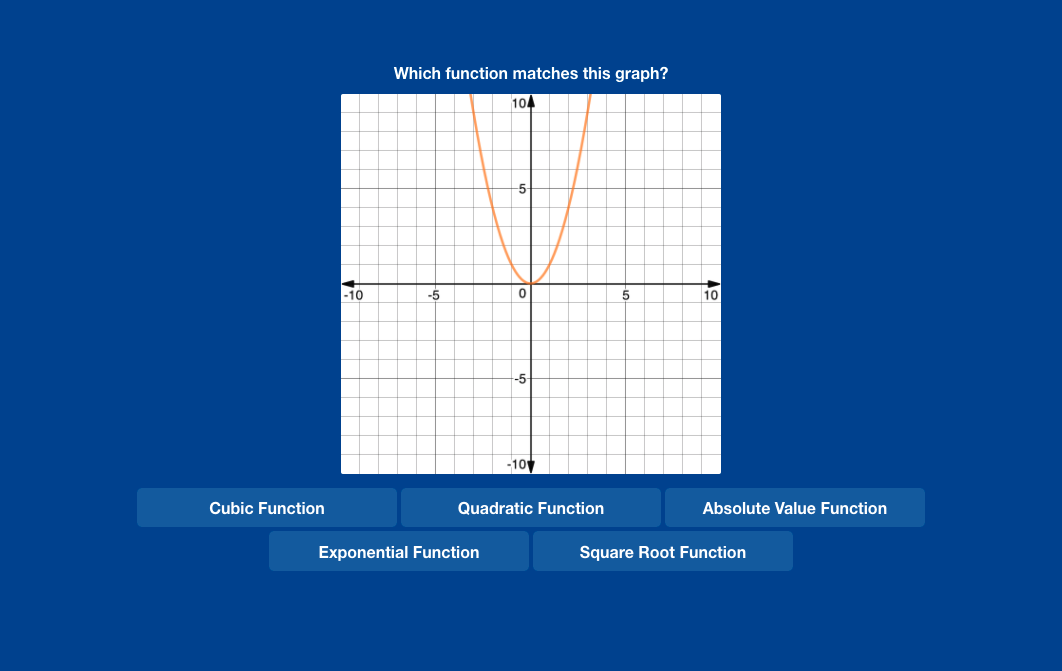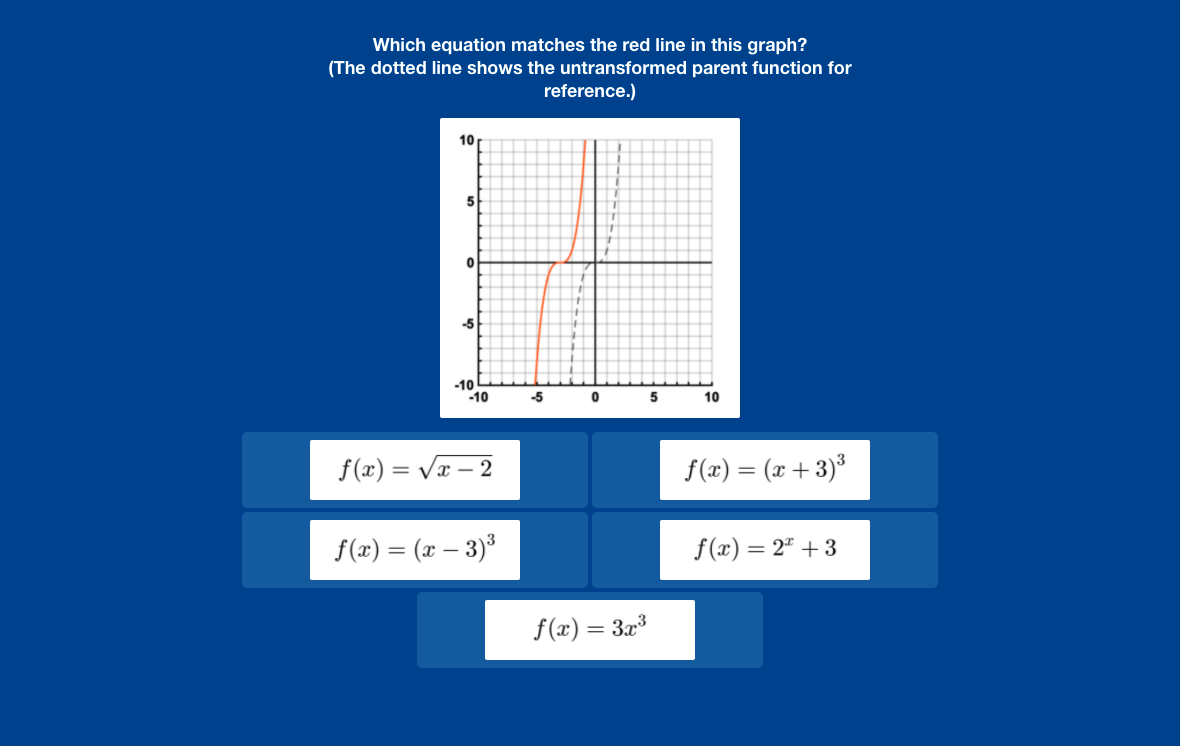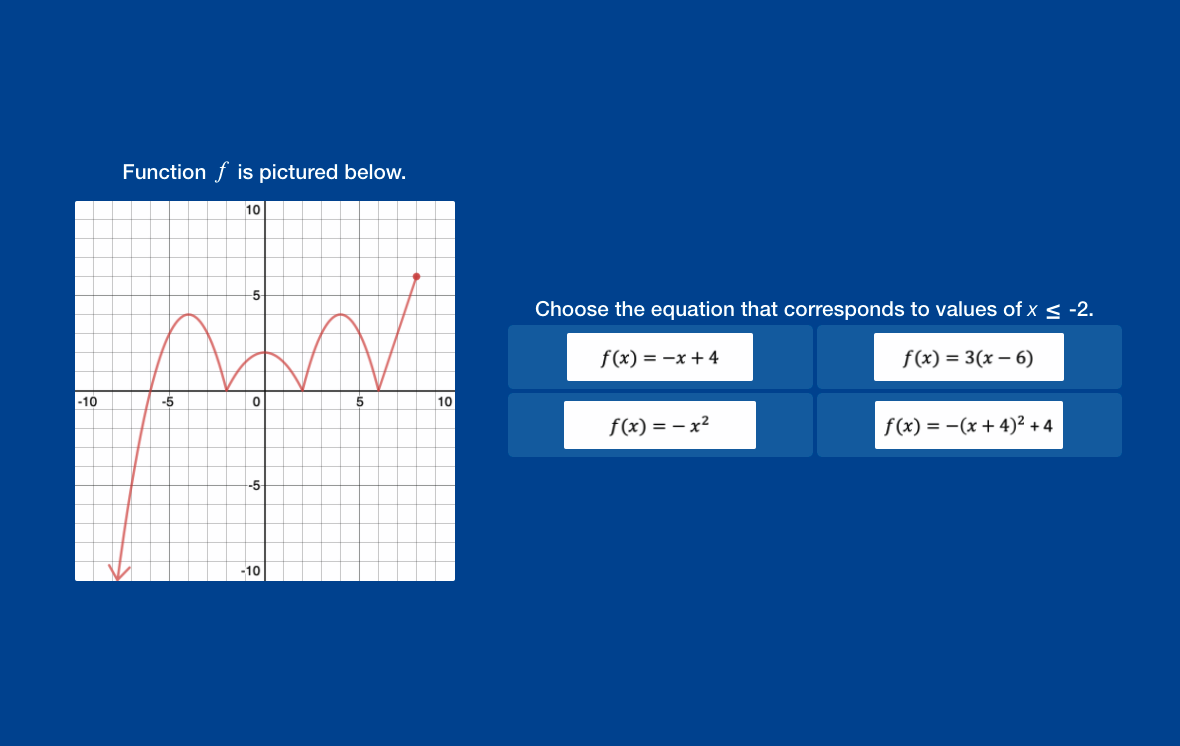Advancing Theory and Application in Perceptual and Adaptive Learning to Improve Community College Mathematics
This project has collaboratively developed a suite of five web-based Perceptual and Adaptive Learning Modules (PALMs) to support community college students in algebra courses. These PALMs cover content designed to promote fluent recognition of structures and relationships for algebraic functions as they are represented in graphs and equations and for fast, accurate interpretation of standard notation conventions.
PALMs are easily accessible, cost-effective resources that use each individual student’s accuracy and response time in real-time to optimally space and sequence problems from each learning category, creating a customized learning path for each student that leads to fluent mastery of each type of problem. PALMs automatically implement well-established principles of learning such as spacing and interleaving, the testing effect, and learning to criterion.
This suite contains the following PALMs:
Parent Functions Perceptual and Adaptive Learning Module (PALM).
The Parent Functions PALM focuses on fluent recognition and identification of basic functions in algebra as they are represented in equations and graphs. The functions included in the PALM are Identity, Quadratic, Square Root, Cubic, Cube Root, Exponential, Reciprocal, and Absolute Value.

Transformations of Functions Perceptual and Adaptive Learning Module (PALM).
The Transformation of Functions PALM focuses on horizontal and vertical translations and reflections of basic functions in algebra. Learning points include recognizing and mapping across transformations of basic parent functions as they are represented in graphs and equations. The functions included in the PALM are Identity, Quadratic, Square Root, Cubic, Cube Root, Exponential, Reciprocal, and Absolute Value.

Piecewise Functions Perceptual and Adaptive Learning Module (PALM).
The Piecewise Functions PALM focuses on fluent interpretation of piecewise functions as they are represented in graphs and equations. Learning points include determining the domain, range, and intercepts of a piecewise function from its graph; finding all values of x for which f(x) is greater than zero or less than zero; identifying f(x) for various values of x; determining which x-values correspond to a given y-value; and identifying the equation corresponding to a given segment of the domain. The Piecewise Functions PALM also helps students come to interpret notation quickly and accurately.

End Behavior, Zeros and Multiplicities of Polynomial Functions Perceptual and Adaptive Learning Module (PALM).
The End Behavior, Zeros and Multiplicities PALM focuses on fluent interpretation of piecewise functions as they are represented in graphs and equations. Learning points include using the leading co-efficient and degree of a function’s equation to determine the end behavior of it graph and using the end behavior of a graph to identify the corresponding equation. Learners also use the factored form of an equation to identify zeros and multiplicities and to determine whether zeros will be cross points or touch points on the equation’s graph. Given the zeros of a function, they learn to recognize a corresponding factored equation. This module also helps student come to interpret notation quickly and accurately.

Mixed Review Perceptual and Adaptive Learning Module (PALM).
The Mixed Review PALM combines learning material from the other four PALMs in this suite, including basic functions and transformations of functions, piecewise functions, and the end behavior, zeros and multiplicities of polynomial functions. It is designed for efficient recurrent training of learning points covered previously in the companion PALMs. Using each learner’s individual performance data, the Mixed Review PALM adaptively allows rapid retirement of better learned categories, so that review time can be focused on less fluent categories.

These resources were developed under a grant from the National Science Foundation.* Annotated, de-identified datasets from studies completed under this project will be made available on request. Please address inquiries to humanperceptionlab@gmail.com.

* We gratefully acknowledge support from the National Science Foundation (NSF) under Grant No. DRL-1644916. Any opinions, findings, and conclusions or recommendations expressed in this material are those of the author(s) and do not necessarily reflect the views of the National Science Foundation.